The great hits from the past are still relevant now. From early rock to punk, protest song to sentimental waltz, each song to make it to No. 1 on the Billboard Hot 100 chart is sure to ignite a family dance party — or at least a much-needed dose of nostalgia.
From 1950 to 2000, here are the No. 1 songs from each year. What song was popular the year you were born?
1950: “Goodnight, Irene”
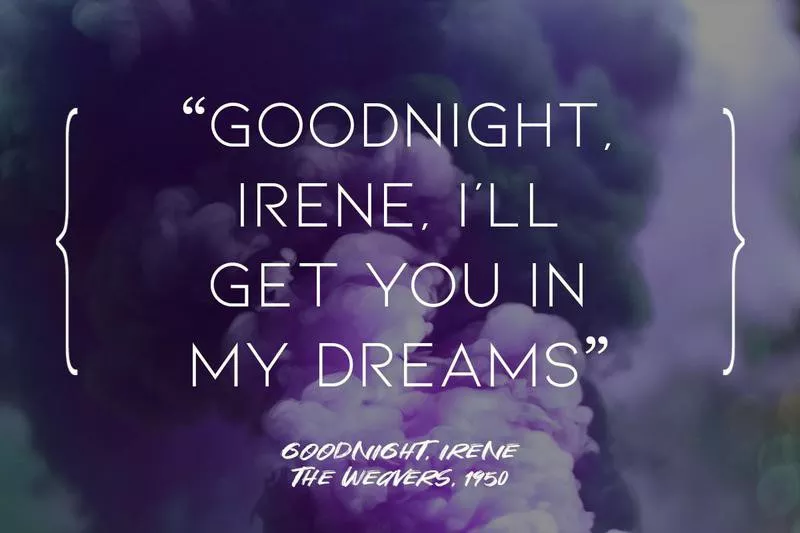
According to the Billboard Year-End charts, the top pop song for 1950 was “Goodnight, Irene.” Still a karaoke favorite, the song was simple but memorable for its repetitive chorus.
It was first recorded by blues musician Lead Belly (Huddie Ledbetter) in 1933 and later became a more folk-oriented song in the hands of The Weavers. They recorded the song a year after Lead Belly died and managed to keep the song at No. 1 on the charts for 13 weeks.
1951: “Too Young”

Written by Sidney Lippman with lyrics by Sylvia Dee, this classic by Nat King Cole was released by Capitol Records.
The song remained on the Billboard Charts at No. 1 for five weeks, though it stayed on the Best Seller chart for 29 weeks. Of his extensive catalog, Cole described this as one of his three favorite songs.
1952: “Blue Tango”

A rarity on the No. 1 charts, “Blue Tango” was an instrumental composition that was written for orchestra. It was later turned into a pop song and has since been covered by various artists, including Amanda Lear in 1977.
Leroy Anderson was best known for his short orchestral compositions, many of which were performed by the Boston Pops Orchestra.
1953: “Song from Moulin Rouge”

Also known as “Where Is Your Heart,” this beloved song first appeared in the 1952 movie, “Moulin Rouge.” The music, written by Georges Auric, was initially accompanied by French lyrics by Jacques Larue.
The film version was called “It’s April Again” and had English words by William Engvick. The recording that made No. 1 on the Billboard Charts was performed by Percy Faith’s Orchestra, with Felicia Sanders providing vocals. It lasted 24 weeks on the charts.
1954: “Little Things Mean A Lot”

“Blow me a kiss,” sang Kitty Kallen, and the public was enthralled. Written by Edith Lindeman and Carl Stutz, the same team behind Perry Como’s 1959 hit, “I Know,” this established the duo as power players in the pop industry.
The song was later covered by Alma Cogan, Harry James, Joni James, Cilla Black and Patty Duke, amongst many others.
1955: “Cherry Pink and Apple Blossom White”

This English version of the original 1950 song by Louiguy, this recording by Perez Prado was an orchestral composition. The most popular version, Perez initially recorded the song for the title of the movie “Underwater!”
Perez Prado was a Cuban bandleader often recalled as “King of the Mambo.” He became a naturalized citizen of Mexico in 1980 and his son continues his legacy via the Perez Prado Orchestra in Mexico City still.
1956: “Heartbreak Hotel”
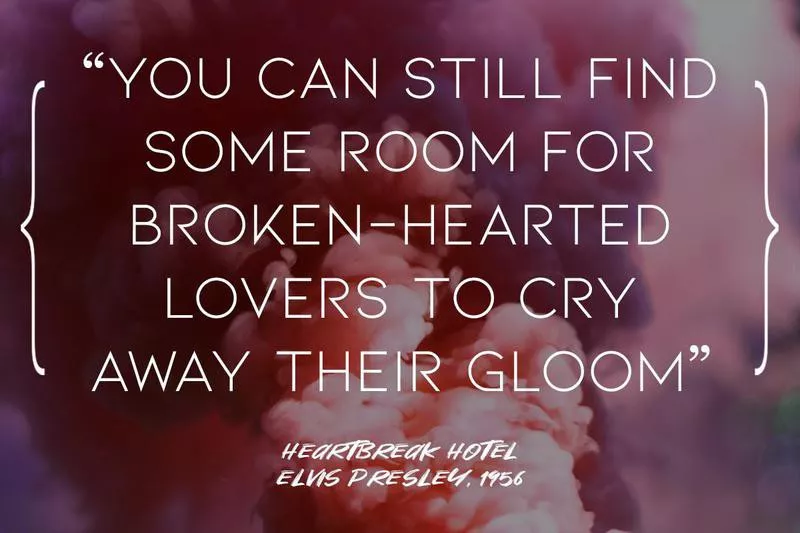
This was the first song of Presley’s released by record label RCA Victor. The lyrics were inspired by a news article on the suicide of a man who leapt from a hotel window. Presley agreed to perform the song after being approached by co-writer Mae Boren Axton at a country music convention in Nashville in 1955.
He recorded it with The Blue Moon Boys, Chet Atkins on guitar and Floyd Cramer on piano. It stayed atop the Billboard charts for 7 weeks.
1957: “All Shook Up”

A composition by Otis Blackwell, “All Shook Up” was recorded by Elvis and released on his own Elvis Presley Music. It landed on top of the Billboard Hot 100 in April 1957 and remained there for eight weeks.
It also peaked at No. 1 on the country chart. It was recorded on Jan. 12, 1957, at Radio Recorders in Hollywood, California.
1958: “Nel Blu Dipinto di Blu (Volare)”
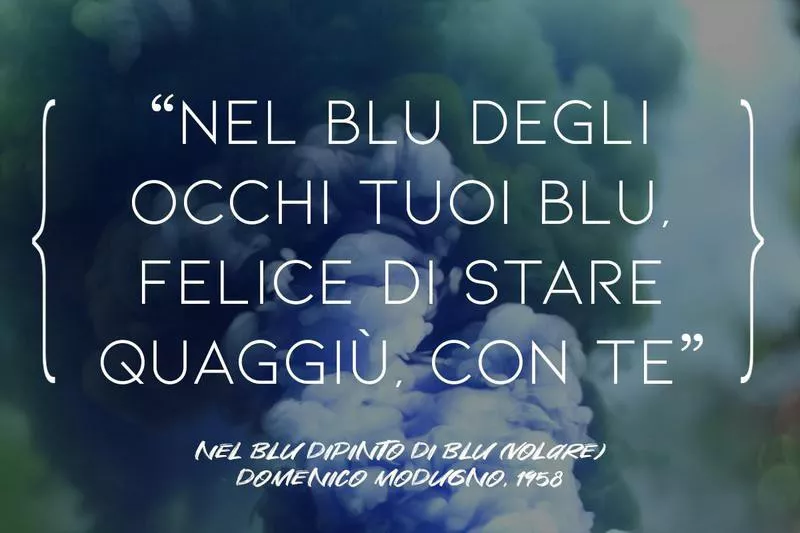
The translation of this No. 1 song is “In the blue painted sky.” Volare means “to fly.” The song was selected as the Italian Eurovision Song Contest entry in 1958, where it came third of 10 songs.
Consequently, it exceeded 22 million copies sold globally, ensuring it became one of the most popular Eurovision songs of all time. In August and September 1958, it spent five weeks as No. 1 on the Billboard Hot 100, also winning Grammy awards for Record of The Year and Song of The Year.
1959: “The Battle of New Orleans”

Written by Jimmy Driftwood, this song recalls the Battle of New Orleans as experienced by an American soldier.
Though Johnny Horton nailed the No. 1 spot on the Billboard Hot 100 in 1959, the song has been recorded by many artists.
It also made No. 1 on the country music song chart for the top songs in the first 50 years of the Billboard Hot 100 chart.
1960: Theme from “A Summer Place”

The most popular recorded version of Max Steiner’s song for the 1959 movie A Summer Place, Percy Faith and his orchestra struck No. 1 on the Billboard Hot 100 chart for nine weeks in 1960. The single was released on Columbia Records in September of 1959, prior to the release of the movie.
It wasn’t an immediate hit, though it set a record for nine consecutive weeks at No. 1, only to be outdone in 1977 with “You Light Up My Life.”
1961: “Tossin’ and Turnin'”

This song not only made it to No. 1 on the Billboard Hot 100 chart in July 1961, but also made No. 1 on the R&B chart. It was included on the soundtrack to the 1978 movie Animal House.
A very brief two minutes and 29 seconds, this hit song included Ritchie Adams and Eric Gale on guitar, King Curtis on tenor sax, Frank Haywood Henry on baritone sax and Sticks Evans on drums. The song also ranked as 27th biggest song of all time according to Billboard magazine in 2008.
1962: “Stranger on the Shore”

One of the few songs to be taken by the crew of Apollo 10 on their mission to the moon, this track by Acker Bilk was included on a cassette tape by crew member Gene Cernan in 1969.
The composition was written for clarinet by Acker Bilk, originally named Jenny for his daughter. It then became a theme tune to British TV drama, “Stranger on the Shore.” It reached No. 1 in the U.S. and No. 2 in the U.K. in 1961.
Released on Columbia Records, it became the U.K.’s biggest-selling single of 1962 and, by November 2012, had sold 1.16 million copies.
1963: “Surfin’ U.S.A.”

Brian Wilson wrote the lyrics to this Chuck Berry composition, which was recorded by the Beach Boys and released as a single in 1963.
It was the title track of their album, reaching the No. 1 song of the year and embodying the California Sound that defined the early 1960s.
Though it was initially listed as No. 1 for 1963, Billboard later also listed “Sugar Shack” by Jimmy Gilmer and the Fireballs as number 1.
1964: “I Want to Hold Your Hand”
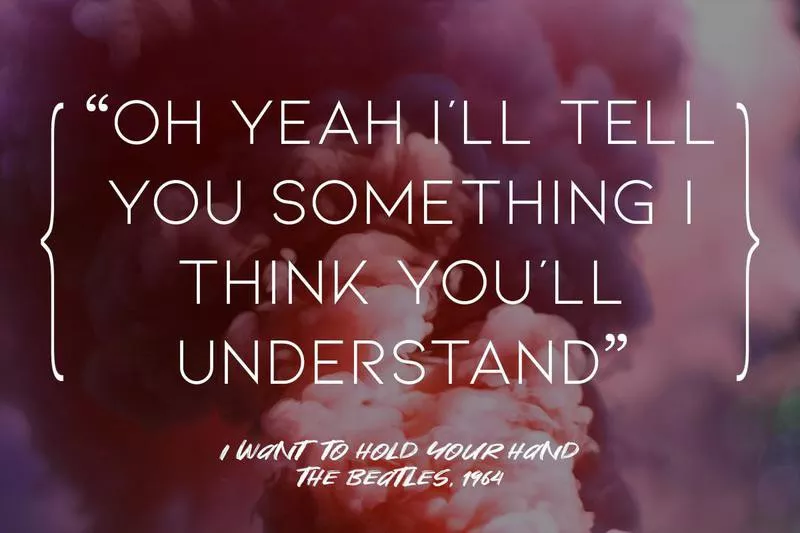
Written by John Lennon and Paul McCartney, “I Want To Hold Your Hand” was recorded in October 1963.
It was the first American No. 1 song for the British band, starting at No. 45 in January and then topping the Billboard Hot 100 by Feb. 1.
It was the best-selling single globally, with over 12 million copies sold.
1965: “Wooly Bully”

This song was written by the frontman of Sam the Sham and the Pharaohs, Domingo Samudio based on traditional 12-bar blues.
It was a global success, remaining in the Hot 100 for 18 weeks and though it didn’t reach No. 1 on a weekly chart, it was ranked the No. 1 for the year by Billboard. It combined Mexican-American conjunto rhythm with classic rock.
1966: “California Dreamin’”

In 1963, newly married to John Phillips, Michelle Phillips was feeling homesick for California.
The couple were living in New York City and it was a cold winter, which inspired the track “California Dreamin’.” Rather than a guitar solo the song contains a flute solo, performed by jazz player Bud Shank.
The song was recorded in Los Angeles on Nov. 4, 1965, in the same studio that The Beach Boys recorded Pet Sounds.
1967: “To Sir with Love”
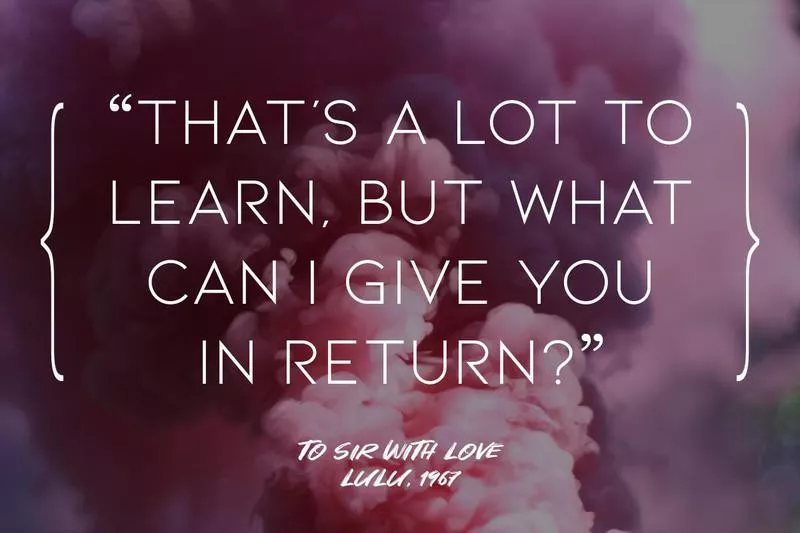
Lulu recorded this song as the theme to the movie by the same name. It was released as a single in the US in 1967, making it to No. 1 on the Billboard Hot 100 by October.
The song was written by Don Black and Mark London. It was later covered by Herbie Mann, Al Green, The Jackson 5 and Soul Asylum.
1968: “Hey Jude”

“Hey Jude” was a No. 1 hit in several countries, becoming the top-selling single of 1968 in the U.K., U.S., Australia and Canada. It remained No. 1 on the Billboard Hot 100 for nine weeks.
The song was originally a ballad for Julian Lennon, the son of co-writer John Lennon, called “Hey Jules.” It evolved into “Hey Jude,” which was recorded in London at Trident Studios.
1969: “Sugar, Sugar”

Sugar, Sugar remained at the top of the Billboard Hot 100 chart for four weeks, also making it to No. 1 on the UK Singles Chart for eight weeks.
It was written by Jeff Barry and Andy Kim, performed by the cartoon band The Archies. The song was released on album Everything’s Archie in May 1969.
1970: “Bridge over Troubled Water”

Released in January 1970, the album Bridge over Troubled Water contained this title track, which turned out to be a major hit. Paul Simon was the singer and songwriter behind the track and one half of Simon & Garfunkel. The instrumental tracks were recorded in California, while the vocals were recorded in New York.
It remained atop the Billboard Hot 100 for six weeks, also becoming a No. 1 in the UK, France, Canada and New Zealand. It was later performed by Aretha Franklin and Elvis Presley.
1971: “Joy To The World”

“Joy to the World” was written by Hoyt Axton, but made famous by the band Three Dog Night.
It came out on their album, Naturally, in November of 1970 and was released as a single in February the following year. It was featured in the movie “The Big Chill,” both as the band’s version and also sung by one of the child characters.
Hoyt Axton’s mother, Mae, co-wrote Heartbreak Hotel, thus making them the first mother and son to have both written a No. 1 pop single on the Billboard Hot 100.
1972: “The First Time Ever I Saw Your Face”

Roberta Flack had released two solo albums without receiving much acclaim when this song, written by Ewan MacColl, made her a global star.
The song featured on the soundtrack to Clint Eastwood movie Play Misty For me, gaining a broad audience for Flack’s music. The song won the Song of the Year and Record of the Year at the 1973 Grammy Awards. It was later covered by Johnny Cash, Elvis Presley, Isaac Hayes and others.
1973: “Tie a Yellow Ribbon Round the Ole Oak Tree”

Irwin Levine and L. Russell Brown wrote this No. 1 song. It reached the top 10 chart in 10 countries and No. 1 in eight of those countries. On the U.S. and U.K. charts, it remained on top for four weeks in April, becoming the top-selling single for the year in both countries.
Billboard acknowledged the song as the 37th biggest of all time in its 50th anniversary of the Hot 100.
1974: “The Way We Were”

“The Way We Were” appeared on Streisand’s 15th studio album by the same name. It was written by Alan Bergman, Marilyn Berman and Marvin Hamlisch.
The song refers to the relationship between the lovers depicted in the 1973 film The Way We Were, starring both Streisand and Robert Redford. It has been certified Platinum by the RIAA, having sold over a million copies. It has been covered many times, including by Gladys Knight & the Pips and Andy Williams.
1975: “Love Will Keep Us Together”

Husband and wife, Captain Daryl Dragon and Toni Tenille released five certified platinum or gold albums. It was this 1975 hit that has proven their most memorable though.
Their first single, “Love Will Keep Us Together” was not only No. 1 on the Billboard Hot 100 singles chart, but the album it was released on also won the Grammy for Record of The Year. It sold over a million copies.
1976: “Silly Love Songs”

Paul McCartney and Linda McCartney co-wrote this Wings classic. Best known for his role in The Beatles, McCartney was able to showcase his solo songwriting skills (as opposed to co-writing with John Lennon) through this new band created with his wife.
This song was a response to the critics who branded McCartney’s style of silly love songs as “sentimental slush.” It proved to be his 27th No. 1 hit as a songwriter.
1977: “Tonight’s the Night (Gonna Be Alright)”
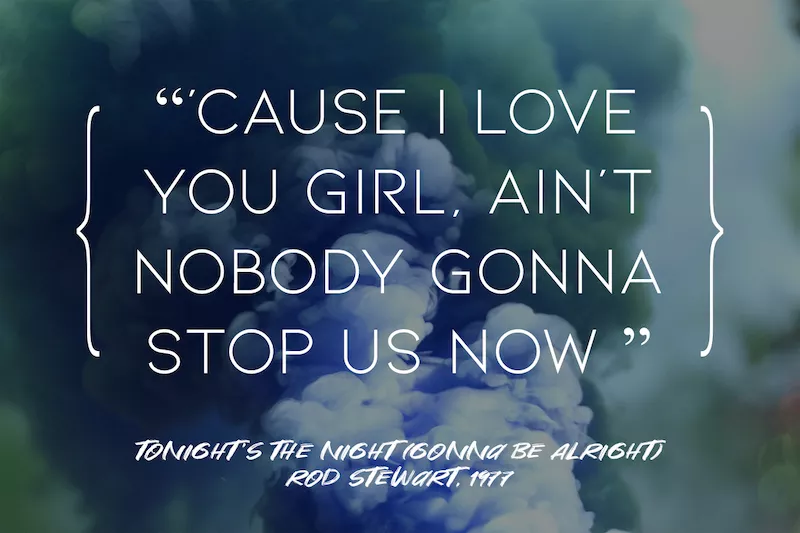
Rod Stewart found his second U.S. chart hit with this song. It also reached No. 5 in the U.K. and No. 3 in Australia. Stewart, it has been suggested, was inspired by “Today’s the Day” by America to write this track.
It was considered risque at the time, and some radio stations insisted on edited versions of the song in which whispers and innuendo were removed.
1978: “Shadow Dancing”

This disco hit by British singer-songwriter Andy Gibb stayed at No. 1 for seven weeks in 1978. It was a songwriting collaboration between Andy and his brothers (Barry, Maurice and Robin Gibb), the three members of The Bee Gees. Andy was actually the youngest brother in the family.
The song reached No. 1 from mid-June through the end of July, until it was knocked off first place by The Rolling Stones’ “Miss You.”
1979: “My Sharona”

Remaining at No. 1 on the Billboard Hot 100 singles chart for six weeks, “My Sharona” by The Knack sold over a million copies.
The song found a second wave of popularity when it was featured on the soundtrack for “Reality Bites” in 1994 — so much so that the band began another tour. It was also featured on the “Pulp Fiction” movie soundtrack that same year.
1980: “Call Me”

A co-writing partnership between Deborah Harry (Blondie) and European disco producer Giorgio Moroder, “Call Me” established Blondie as the first woman in U.K. chart history to write three No. 1 singles.
Moroder had actually intended on producing the track with Stevie Nicks (of Fleetwood Mac) as vocalist, and only partnered with Harry when Nicks rejected the opportunity.
1981: “Bette Davis Eyes”

A No. 1 hit for nine weeks in the U.S., Kim Carnes adapted this song from an original by Jackie DeShannon in 1975.
Introducing a synthesizer and entirely removing the jazz styling of DeShannon’s version, Carnes experienced her biggest hit with “Bette Davis Eyes.”
1982: “Physical”

Recorded for her 12th studio album, Olivia Newton-John’s hit was originally written for Rod Stewart, and also offered to Tina Turner before reaching Newton-John.
It became platinum and spent 10 weeks at No. 1 on the Billboard Hot 100, cementing it as her biggest American hit. The suggestive song was censored or even banned by some radio stations, changing Newton-John’s clean-cut image.
1983: “Every Breath You Take”

Winning Song of the Year and Best Pop Performance by a Group With Vocals, this single took the Grammy Awards as well as No. 1 on the Billboard Hot 100 for eight weeks.
Sting has attributed the song to the difficult time he experienced after separating from Frances Tomelty. He has said the song is sinister in its themes about obsession, jealousy and surveillance.
1984: “When Doves Cry”

From Prince’s lauded album “Purple Rain,” this lead single became an international hit and stayed at the top of the American charts for five weeks. Prince played all instruments on the track in addition to recording the vocals.
Prince won a Grammy Award for Best Rock Vocal Performance by a Duo or Group with Vocal for the album. It was also the soundtrack to the 1984 film of the same name, which earned Best Original Song Score at the 1985 Academy Awards.
1985: “Careless Whisper”

This hit song was co-written between George Michael and Andrew Ridgeley. It directly preceded George Michael going solo, and was the biggest single Wham! experienced.
Michael was only 17 years old when he wrote, and it was his top-selling hit in the U.K. — both as a solo artist and in Wham!
1986: “That’s What Friends Are For”

Written by Burt Bacharach and Carole Bayer Sager, “That’s What Friends Are For” starred some of the biggest pop names at the time and was recorded by what was dubbed Dionne & Friends. Dionne Warwick told PEOPLE magazine that she bumped into Elton John while grocery shopping the night before recording and said “I’m recording tomorrow, and I need you.”
John, Gladys Knight and Stevie Wonder guest star on the song, which made it to No. 1 on the Billboard charts and also earned Warwick her fifth Grammy Award.
1987: “Walk Like an Egyptian”

The third single from the album, “Different Light,” this track sold over a million copies and proved successful for The Bangles, after being turned down by singer Toni Basil.
It remained at the top of the Hot 100 for four weeks and was the first track by an all-female group playing their own instruments to top the Billboard singles chart.
1988: “Faith”

This single was the highlight of George Michael’s debut album as a solo artist. The album went on to win a Grammy Award for Album of the Year.
In addition to this track, “Father Figure,” “One More Try” and “Monkey” all made it to No. 1 on the Billboard Hot 100 chart. Michael is the only British male solo artist to have four hits from one album on this chart.
1989: “Look Away”
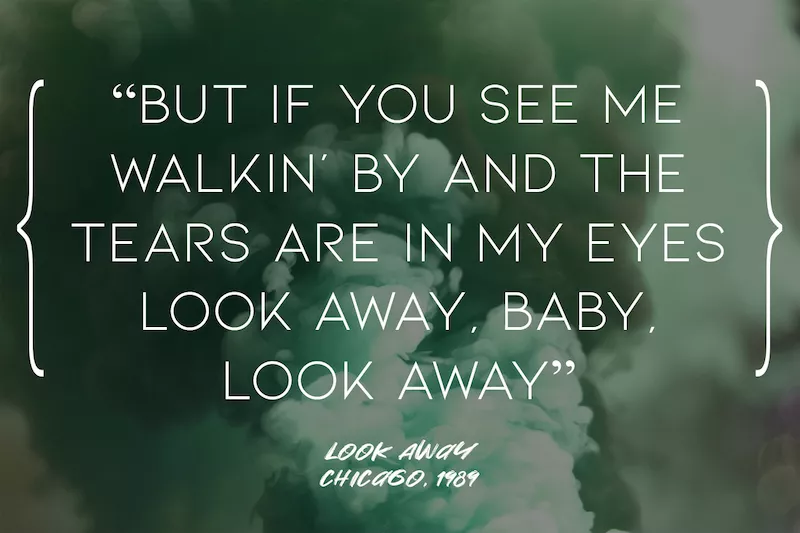
Hitting No. 1 on the Billboard Hot 100 for a fortnight in December 1988, “Look Away” was Chicago’s seventh No. 1 hit.
Diane Warren wrote the song, as well as “I Don’t Wanna Live Without Your Love.” She submitted a demo to Chicago’s manager Howard Kaufman, though initially, bassist Jason Scheff didn’t think it was a hit. “I remember hearing ‘Look Away’ and thinking it’s OK, but not great. Thank God I’m not an A&R man.”
Indeed.
1990: “Hold On”

Chynna Phillips, Carnie Wilson and Wendy Wilson of the group Wilson Phillips had a debut hit with this No. 1 single. Penned by Glen Ballard in collaboration with Phillips and the Wilson sisters, this song went on to make the soundtrack of “Bridesmaids” (the 2011 movie starting Kristen Wiig and Maya Rudolph).
It also made Billboard’s pick as No. 15 on the list of 100 Greatest Girl Group Songs of All Time.
1991: “(Everything I Do) I Do It for You”

This memorable single from Bryan Adams’ “Waking Up the Neighbours” album was also released on the soundtrack for “Robin Hood: Prince of Thieves” (starring Kevin Costner).
It reached No. 1 on the music charts of 16 countries, including the U.S. and U.K. It stayed at the top of the Billboard Hot 100 for seven weeks.
1992: “End of the Road”
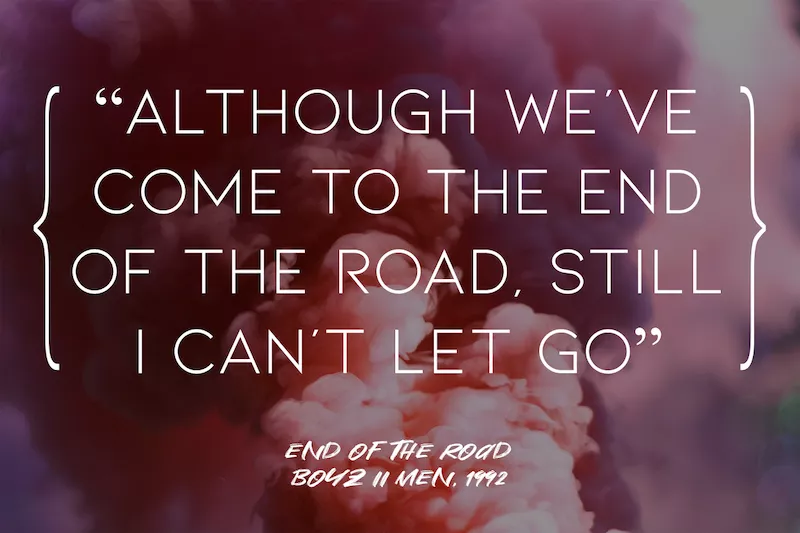
Iconic producers L.A. Reid and Babyface teamed with Boyz II Men to create this chart-topping single in 1992. It also made the soundtrack to Eddie Murphy’s movie, “Boomerang,” the same year.
It stayed on top of the chart for 13 weeks until being knocked off by Whitney Houston’s “I Will Always Love You.” The track appears on the band’s “Cooleyhighharmony” album.
1993: “I Will Always Love You”

Speaking of Whitney Houston, “I Will Always Love You” was atop the Billboard Hot 100 chart for a whopping 14 weeks. This song was a second version of the one written and performed by Dolly Parton as a country song in 1974. Parton also had success with it as a No. 1 — both as a single and on the soundtrack of “The Best Little Whorehouse in Texas.”
Houston’s version was released on the soundtrack for “The Bodyguard,” propelling its popularity on the chart.
1994: “The Sign”

Swedish band Ace Of Base released this international hit in late 1993 on the album “Happy Nation.” It was No. 1 on the Billboard Hot 100 for six weeks in the U.S., though didn’t make it past No. 2 in the U.K.
The song was also a major hit in many other countries, topping charts in Australia, New Zealand, Israel, Canada and Zimbabwe.
1995: “Gangsta’s Paradise”

This single by Coolio featuring L.V. made Coolio a household name. The key track to the 1995 film “Dangerous Minds,” it adopts a sample from Stevie Wonder’s “Pastime Paradise” for the chorus.
It was certainly a success. Coolio won a Grammy for Best Rap Solo Performance, two MTV Video Music Awards, a Billboard Music Award and ultimately sold over 5 million copies in the U.S., U.K. and Germany combined.
1996: “Macarena”

Sevilla, Spain-based Los Del Rio originally came up with the idea for “Macarena” during a flamenco performance in Venezuela in 1992. It was first released on their 1993 album “A Mi Me Gusta” in Spain, where it was a major hit.
But it wasn’t until Miami-based Bayside Boys did a remix of the track in 1996 that the part-Spanish, part-English version became a bestseller globally.
1997: “Candle in the Wind 1997” / “Something About the Way You Look Tonight”

This Elton John single was an ode to Marilyn Monroe in its original appearance on “Goodbye Yellow Brick Road” in 1973, though it was later released as an ode to Princess Diana in 1997 when it became the biggest-selling single that U.S. and U.K. charts had ever seen, selling 33 million copies. It was co-written by John and Bernie Taupin.
Several remixes and versions have been released, including acoustic versions, live and engineered.
1998: “Too Close”

This U.S. hit by American R&B group Next was the biggest-selling single of 1998, staying for a record-breaking 38 weeks in the U.S. top 20 charts. Despite the highly sexual content of the song, it was widely played on the radio.
The song even spawned a style of dance called “Freaking,” which was banned in some U.S. schools for its explicit moves.
1999: “Believe”

Do you believe in a chart-topping life after 70? Cher does, and this track proves her instincts to be on point. Highly autotuned and synthesized, this was a far cry from the Sonny & Cher good times of the 1970s. Still, it proved to be an anthemic song for LGBTQI fans, played in clubs and festivals worldwide.
It was the lead single from “Believe,” Cher’s 22nd album. It became a No. 1 worldwide in the U.S., Australia, Canada, Ireland, New Zealand, U.K., Spain, France, Germany and Italy, selling more than 11 million copies across the globe.
2000: “Breathe”

An all-female affair, “Breathe” was written by Stephanie Bentley and Holly Lamar for country music powerhouse Faith Hill. It was the single from her album of the same name.
It was a No. 1 hit on the Billboard Hot Country Songs as well as, of course, a No. 1 hit for 2000. It was also named 27th most successful song of the 2000s on the Billboard Hot 100 Songs of the Decade.